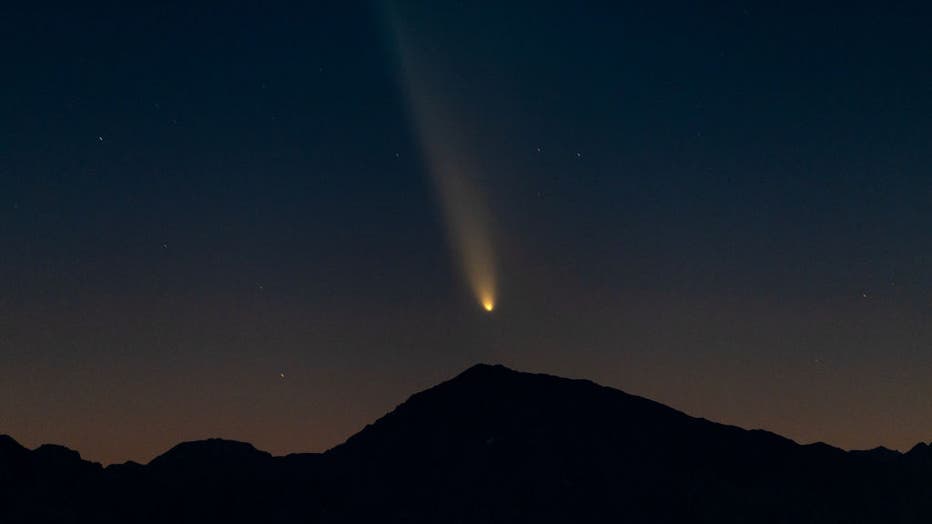Comet pays once-in 160,000-year visit to Earth's nighttime skies
Watch: Stunning 'Comet of the Century' dazzles as it soars past Earth
Astronomers report that Comet Tsuchinshan-ATLAS reached its closest point to the Sun on Sept. 27, putting on a spectacular display. The comet will make its way back near Earth, offering another chance to witness this celestial event around Oct. 12.
A recently discovered comet is making a bright debut on Earth this month, and with some effort, skygazers might be able to see Comet ATLAS.
Comet C/2024 G3 ATLAS was discovered in April 2024 using the Asteroid Terrestial-Impact Last Alert System or ATLAS.
As a long-period comet, Comet ATLAS takes a long time to complete an orbit of the Sun. Astronomers estimate its orbital period is about 160,000 years.
According to the Planetary Society, the Southern Hemisphere had the best view of the comet after sunset earlier this month, but now the Northern Hemisphere may get its shot.
NASA Astronaut Don Petit captured an image on Saturday of the comet from his view 200 miles above Earth on the International Space Station.
"It is totally amazing to see a comet from orbit. Atlas C2024-G3 is paying us a visit," Petit wrote on X.

FILE - Comet Tsuchinshan-ATLAS appears over the Eastern Sierra mountains as it transitions into the evening sky shortly after sunset, as seen from the Ancient Bristlecone Pine Forest area, on October 12, 2024 near Big Pine, California. (Photo by David McNew/Getty Images)
Comet ATLAS reached perihelion, its closest point to the Sun, on Jan. 13. From now on, it will get dimmer in the night sky each day.
The view for those of us down on Earth won’t be as clear as an astronaut in space. Weather, including the ongoing California wildfire smoke, could obscure the view for many.
Experts with Sky & Telescope magazine say using binoculars or a telescope at mid-northern latitudes might be your best chance to see Comet ATLAS, but you need an unobstructed view of the southwestern sky.
GET UPDATES ON THIS STORY AT FOXWEATHER.COM

